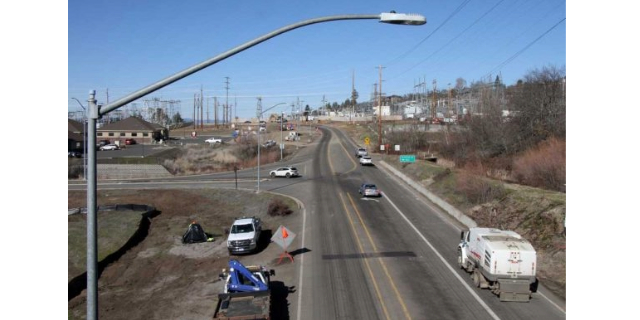ONE PAYCHECK AWAY: Persistent housing crisis requires equally persistent response
Published 6:45 am Sunday, January 7, 2024

- Julie Akins
Gov. Tina Kotek’s housing advisory panel has offered a road map for the emergency legislative session in February, where the governor is expected to ask for significant additional funding.
Trending
It comes on the heels of the latest national Housing and Urban Development study, which stated:
“Oregon had the highest percentage in the nation of unsheltered, unaccompanied youth experiencing homelessness in January 2023 at nearly 70%. That statistic increased by about one-third between 2022 and 2023.
… The state saw the second-highest total percentage of people experiencing homelessness who were unsheltered, at 65% — or about 13,000 of about 20,000 total homeless residents in 2023.
Trending
… The number of Oregon families experiencing homelessness increased by 16% between 2023 and 2022.”
In this column, we’ve spent some time discussing who is likely living rough and what they may endure as a result. Now let’s talk about solutions as suggested by Kotek and the advisory council.
More housing: The governor has stated that we need 36,000 more houses per year to begin making up for the general scarcity in the housing market. To assist in understanding why the scarcity exists, Kotek established the Housing Production Advisory Council. She charged this group with a demand for specifics.
Removing barriers: The advisory council and governor’s office have listed some goals that include making it less complicated to build smaller and therefore potentially more affordable homes. They suggested finding opportunities to improve and streamline the permitting process by allowing local building and planning departments to share possible changes that could not only impact their process, but other jurisdictions as well.
Keeping in mind much of the plot hinges on local and municipal code and function, the governor’s proposal looks at solutions.
• Create the ability for contractors to ask that local authorities declare affordable housing as essential to the community’s economic well-being;
• The governor and panel state that development of housing may be blocked by local public works departments. The workaround is to allow development where public health and safety is not compromised;
• Look at land-use regulations that restrict housing development such as bike and vehicle parking, tree and open space requirements, affordability requirements, transportation management, design standards and others;
• The standard current land use and building permit process is “too complex, at times not predictable, expensive, and time intensive.” And the process is different in every community creating additional challenges. The conclusion, according to the governor and panel is that “the process needs to be changed to address the barriers to housing production that this creates.”;
• Because time is of the essence in the housing crisis, the governor and panel suggest surveying local building departments for average permit time and plan review staff. They further suggest creating a strategy for local agencies to adopt practices from the highest performing jurisdictions.
• Limit opposition comments to major safety deficiencies and further, comments not impacting constructability or having a substantial nexus to life or safety would be barred.
• Provide some oversight to utility companies to ensure they are working quickly with development to provide power and designs. It isn’t uncommon to request a design from a power company and not hear from them for months.
• Assess potential changes to the current public participation and land use appeals process to address barriers to housing development. Issues to assess include standing, evidence, time, expense and fees.
What’s most notable in Kotek’s panel is acknowledgement that homelessness is made worse by a shortage of housing, especially on the affordable scale. Essentially, they state that until there are enough homes that are within reach of thousands of Oregonians, homelessness will continue to rise.
“The current land use and building permit process is too complex, at times not predictable, expensive, and time intensive. In addition, the process varies in every community creating additional challenges,” the advisory panel states.
The governor and her panel’s work on this subject appear to be very much in line with the thinking of those embroiled in the research such as AllCare Health and two scholars from the University of Washington, Gregg Colburn and Clayton Page Aldern, who state in their research, “… the researchers test a range of conventional beliefs about what drives the prevalence of homelessness — including mental illness, drug use, poverty, weather, generosity of public assistance and low-income mobility — and find that none explain why, for example, rates are so much higher in Seattle than in Chicago”
The researchers conclude that, “Instead, housing market conditions, such as the cost and availability of rental housing, offer a more convincing explanation.”
In summary, homelessness is a housing problem.
The governor and Legislature are attempting to remedy this by removing barriers to creating housing. But this is not, by any stretch, an overnight solution. Local communities must have buy-in from locally elected officials and staff. For this to occur, the people — meaning you and I — can help by understanding the true barriers to housing and encouraging our officials both at the state and local level to remove them.









